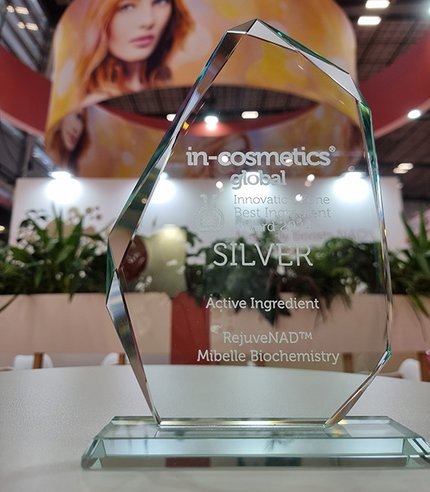Research on venoms led to the successful development of many new drugs. For example the first ever high blood pressure medication (Captopril) mimics the effect of the Fer-De-Lance snake venom without the pathology of envenomation.
Venom-technology for cosmetics?
Mibelle Biochemistry persues this approach in order to develop novel cosmetic actives with animal toxins (venoms). Therefore, Mibelle Biochemistry started a cooperation with the company Venomtech® Ltd in the UK (http://venomtech.co.uk/) specialized in the research of actives from toxins . This company has a collection of 200 different venomous animals to discover new active molecules in the different venoms. Steve Trim is the managing director of Venomtech and has 20 years of experience as a biologist including drug discovery, venomous animals and fractionating the venoms for new actives.
In the following interview with Steve Trimyou learn more about this exciting field of research and how actives based on venom technology can be designed:
Fred: Animal venoms have not evolved to cure our diseases, so why should venoms have potential in drug discovery?
Trim: Many venoms have actions on their prey that are desirable for treating specific human problems. E.g. venoms that kill insects often kill pain in humans because our pain genes are similar to the insect genes.
The venoms of some snakes or scorpions are extremely potent. A few mg of the venom can easily kill a person. How do you make sure that the potential new drugs are safe in use?
The venoms are composed of hundreds of different small peptides and proteins. The whole mixture of these molecules is very dangerous, however isolated single components of these venoms can target specific reactions in a human body. The components responsible for the lethal effect are different from those with a therapeutic use.
How can you find these special components?
In our research we isolate small amounts of venoms from different animals and fractionate the components. Each single fraction of the venom is then tested in specific assays to find activities on special reactions relevant for diseases such as depletion of neurotransmitters or blocking of ion channels.
Once you have discovered an active molecule in a venom how can a drug be made based on this finding?
Once we understand the venom components we can make the active component synthetically and this will have the same effect as the purified venom component. However, in other cases synthetic molecules are made which mimic the activity of the component in the venom. In both cases making synthetic versions of the venom actives means a much greater production capacity, sterility is easier and it doesn’t rely on needing hundreds of venomous animals.
Do you think that this will work also for the development of new active ingredients for cosmetics?
Of course. The synthesis of a small peptide which mimics the function of a protein could be a straight forward solution to prepare a new cosmetic active based on the research of venoms and the final product would not be animal derived.
What could be potential targets in the skin for venom research derived actives?
Skin nerve cells contain many different receptors responsible for signaling of pain, heat, pressure and other sensations. Venoms from different animals such as the jelly fish or the sea anemone contain proteins which block such receptors like the TRPV1 receptor found in the skin. Therefore venom-technology could lead to cosmetic actives for sensitive skin.







